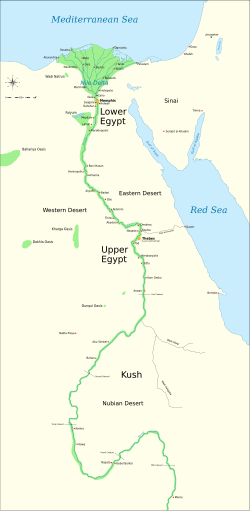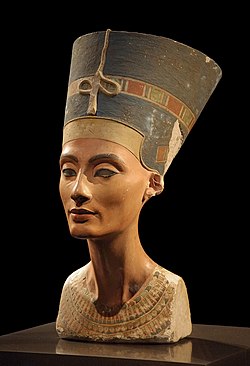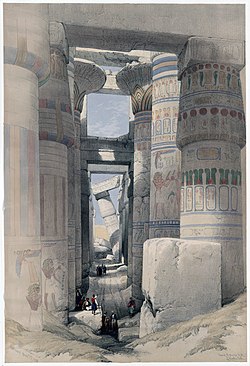Our website is made possible by displaying online advertisements to our visitors.
Please consider supporting us by disabling your ad blocker.
Portal:Ancient Egypt/Selected picture
Selected pictures
 |
Map of the Giza pyramid complex, located 20 km (12.5 mi) southwest of Cairo, Egypt. This Ancient Egyptian necropolis consists of the Great Pyramid, the Pyramid of Khafre, and the Pyramid of Menkaure, along with a number of smaller satellite edifices, known as "queens" pyramids, causeways and valley pyramids, and most noticeably the Great Sphinx. The site has attracted visitors and tourists since classical antiquity, when these Old Kingdom monuments were already over 2,000 years old.
 |
In antiquity, Ancient Egypt was divided into two lands: Upper Egypt and Lower Egypt. To the south, it was bounded by the land of Kush, and to the East, the levant. Surrounded by harsh deserts, the river Nile was the lifeline of this ancient civilization.
 |
The Rosetta Stone is a fragment of a granite stele containing a decree written in Hieroglyphs, Demotic, and Greek. Discovered in 1799, the stone contributed greatly to the process of hieroglyph decipherment.
 |
The Great Sphinx of Giza, partially excavated, with two pyramids in the background.
 |
Bust of Nefertiti. She was the Great Royal Wife of the Egyptian Pharaoh Akhenaten. She was the mother-in-law and the stepmother of the Pharaoh Tutankhamun. She was made famous due to Nefertiti bust (pictured) currently on display in the Neues Museum.
 |
Karnak: "Dromos or first court of the temple" colored lithograph of Karnak.
 |
The pyramids of Giza are among the most recognizable symbols of the civilization of ancient Egypt.
 |
Although the camel was known in ancient Egypt from the time of the New Kingdom, it was not used as a beast of burden until the Late Period.
 |
Plates 6 and 7 of the Edwin Smith Papyrus, the world's oldest surviving surgical document. Written in hieratic script in ancient Egypt around 1600 BC, the text describes anatomical observations and the examination, diagnosis, treatment, and prognosis of 48 types of medical problems.
Previous Page Next Page


